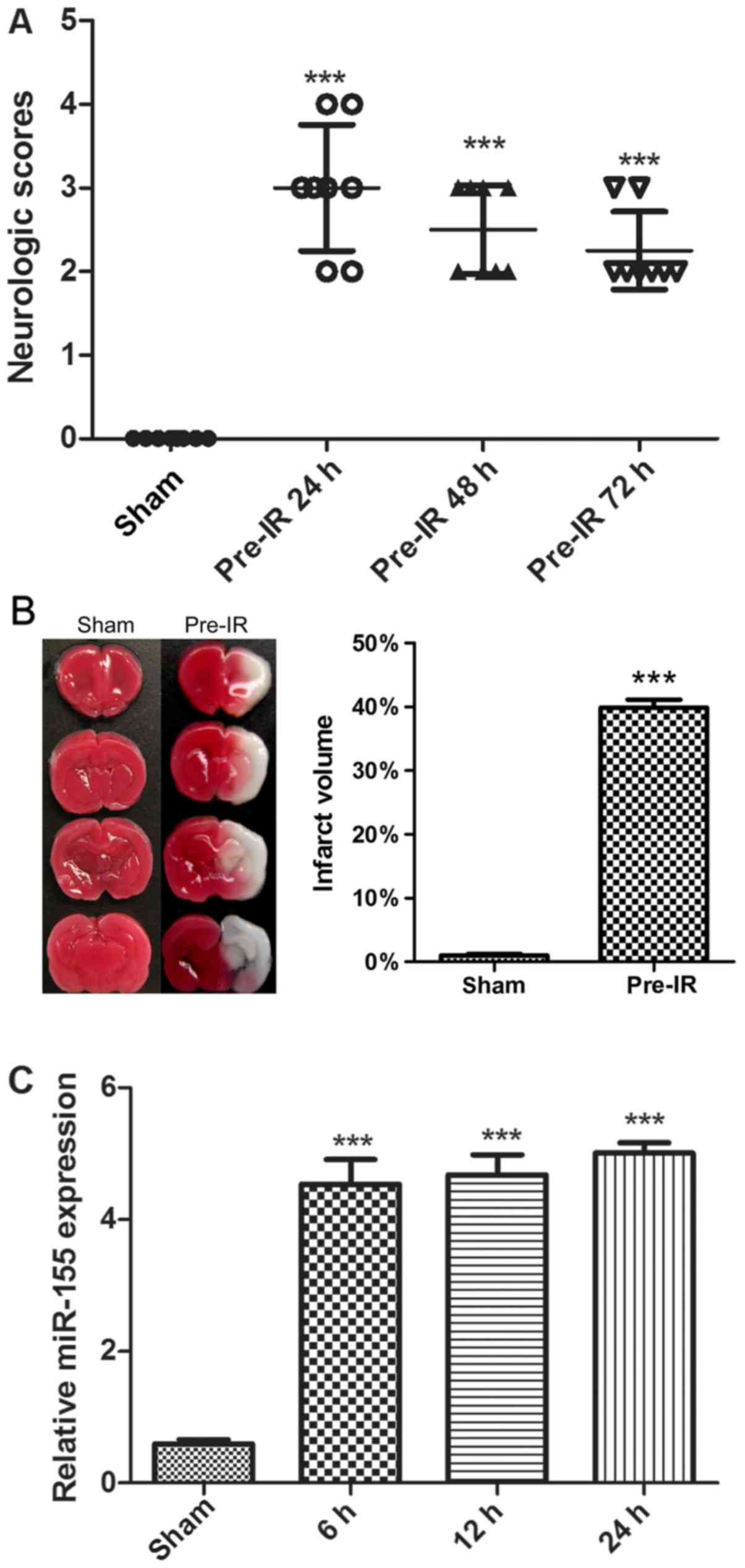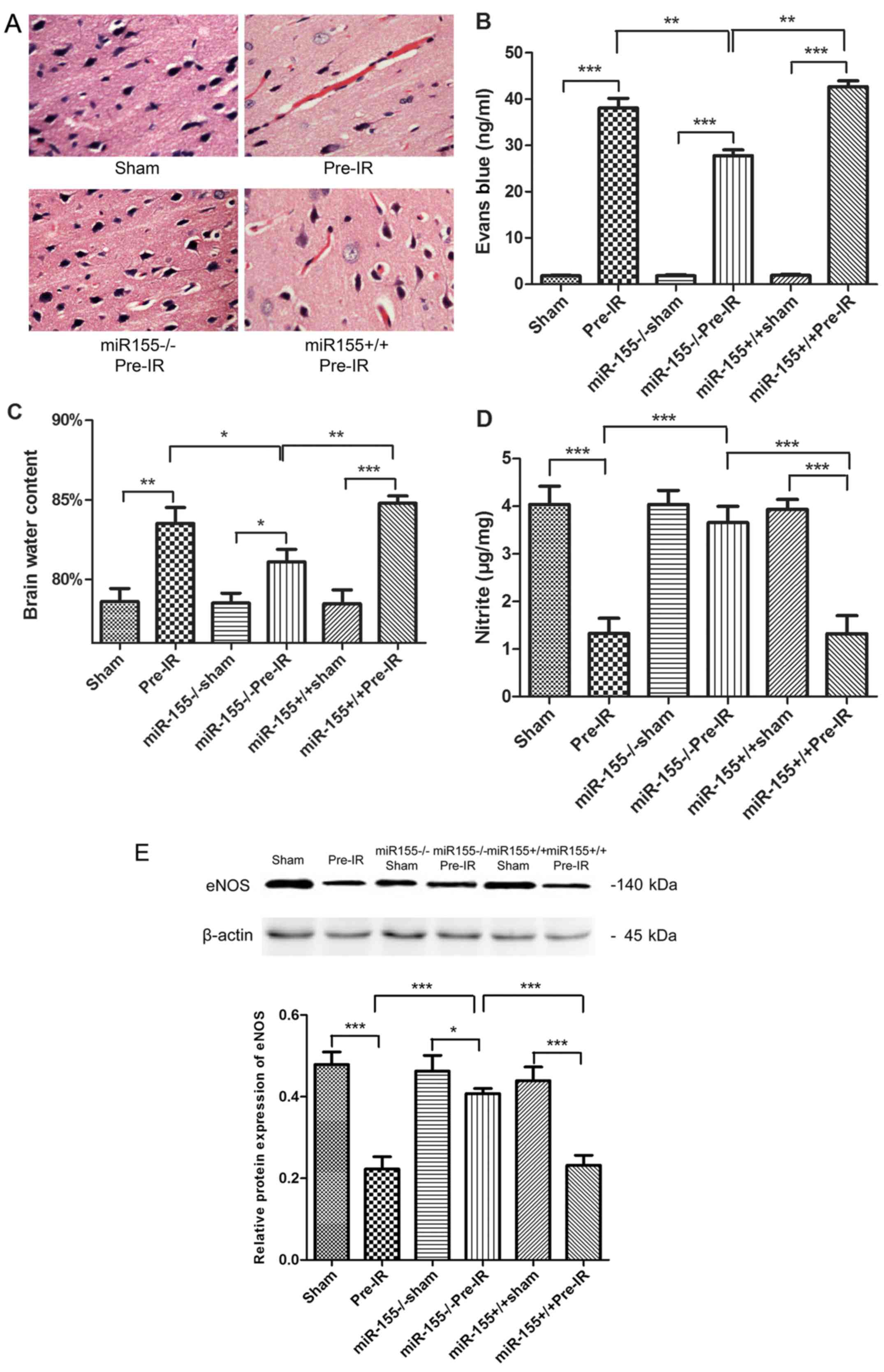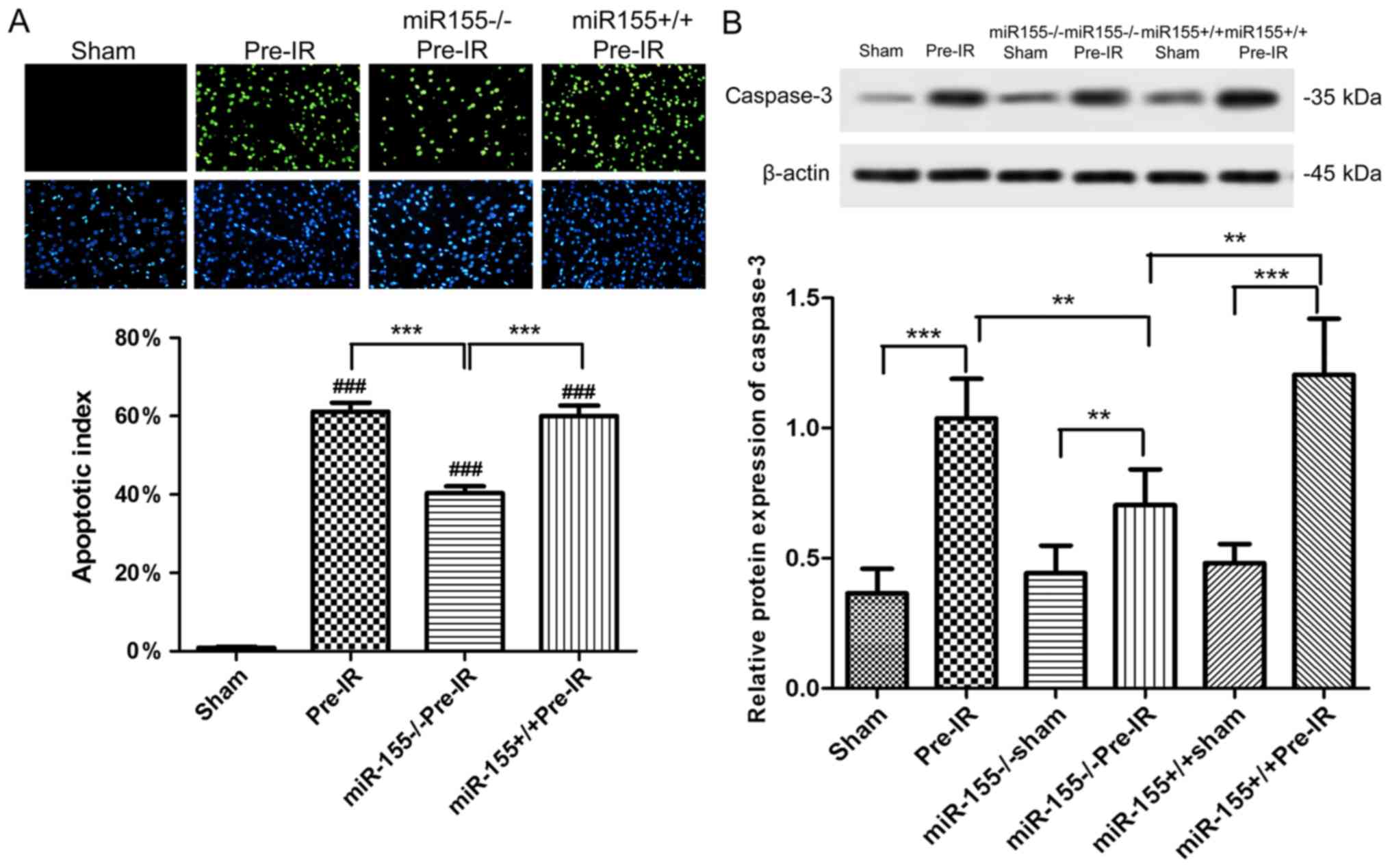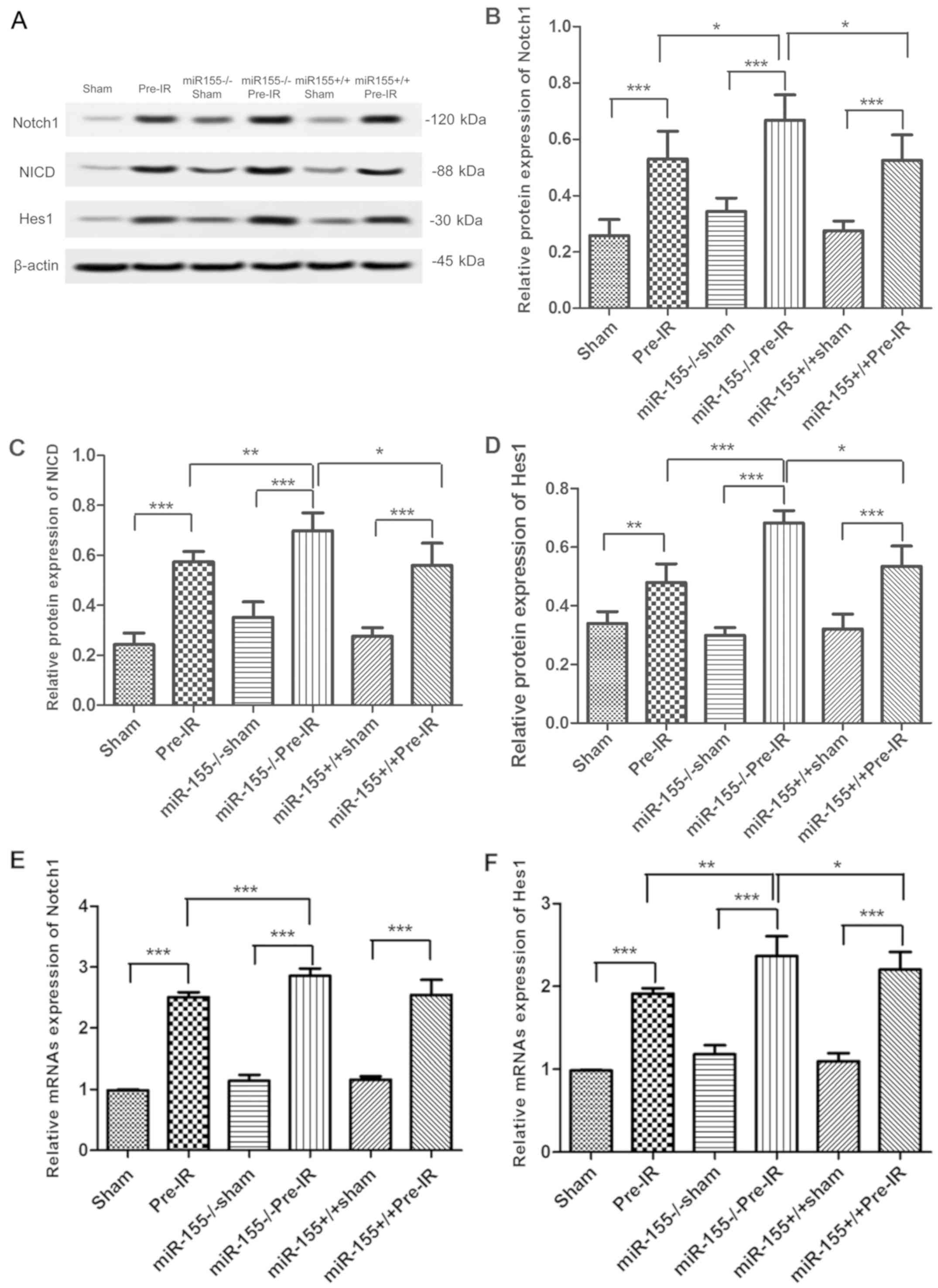|
1
|
Donnan GA, Fisher M, Macleod M and Davis
SM: Stroke. Lancet. 371:1612–1623. 2008. View Article : Google Scholar : PubMed/NCBI
|
|
2
|
Cabral NL, Nagel V, Conforto AB, Magalhaes
PS, Venancio VG, Safanelli J, Ibiapina F, Mazin S, França P,
Liberato RM, et al: High five-year mortality rates of ischemic
stroke subtypes: A prospective cohort study in Brazil. Int J
Stroke. Oct 9–2018.(Epub ahead of print). View Article : Google Scholar
|
|
3
|
Zhang HT, Zhang P, Gao Y, Li CL, Wang HJ,
Chen LC, Feng Y, Li RY, Li YL and Jiang CL: Early VEGF inhibition
attenuates blood-brain barrier disruption in ischemic rat brains by
regulating the expression of MMPs. Mol Med Rep. 15:57–64. 2017.
View Article : Google Scholar : PubMed/NCBI
|
|
4
|
Kalogeris T, Baines CP, Krenz M and
Korthuis RJ: Cell biology of ischemia/reperfusion injury. Int Rev
Cell Mol Biol. 298:229–317. 2012. View Article : Google Scholar : PubMed/NCBI
|
|
5
|
Artavanis-Tsakonas S, Rand MD and Lake RJ:
Notch signaling: Cell fate control and signal integration in
development. Science. 284:770–776. 1999. View Article : Google Scholar : PubMed/NCBI
|
|
6
|
Andersson ER, Sandberg R and Lendahl U:
Notch signaling: Simplicity in design, versatility in function.
Development. 138:3593–3612. 2011. View Article : Google Scholar : PubMed/NCBI
|
|
7
|
Bray SJ: Notch signalling in context. Nat
Rev Mol Cell Biol. 17:722–735. 2016. View Article : Google Scholar : PubMed/NCBI
|
|
8
|
Yoon K and Gaiano N: Notch signaling in
the mammalian central nervous system: Insights from mouse mutants.
Nat Neurosci. 8:709–715. 2005. View Article : Google Scholar : PubMed/NCBI
|
|
9
|
Sun F, Mao X, Xie L, Ding M, Shao B and
Jin K: Notch1 signaling modulates neuronal progenitor activity in
the subventricular zone in response to aging and focal ischemia.
Aging Cell. 12:978–987. 2013. View Article : Google Scholar : PubMed/NCBI
|
|
10
|
LeComte MD, Shimada IS, Sherwin C and
Spees JL: Notch1-STAT3-ETBR signaling axis controls reactive
astrocyte proliferation after brain injury. Proc Natl Acad Sci USA.
112:8726–8731. 2015. View Article : Google Scholar : PubMed/NCBI
|
|
11
|
Pei H, Song X, Peng C, Tan Y, Li Y, Li X,
Ma S, Wang Q, Huang R, Yang D, et al: TNF-α inhibitor protects
against myocardial ischemia/reperfusion injury via Notch1-mediated
suppression of oxidative/nitrative stress. Free Radic Biol Med.
82:114–121. 2015. View Article : Google Scholar : PubMed/NCBI
|
|
12
|
Ramasamy SK, Kusumbe AP, Wang L and Adams
RH: Endothelial Notch activity promotes angiogenesis and
osteogenesis in bone. Nature. 507:376–380. 2014. View Article : Google Scholar : PubMed/NCBI
|
|
13
|
Patenaude A, Fuller M, Chang L, Wong F,
Paliouras G, Shaw R, Kyle AH, Umlandt P, Baker JH, Diaz E, et al:
Endothelial-specific Notch blockade inhibits vascular function and
tumor growth through an eNOS-dependent mechanism. Cancer Res.
74:2402–2411. 2014. View Article : Google Scholar : PubMed/NCBI
|
|
14
|
Ambros V: The functions of animal
microRNAs. Nature. 431:350–355. 2004. View Article : Google Scholar : PubMed/NCBI
|
|
15
|
Bartel DP: MicroRNAs: Genomics,
biogenesis, mechanism, and function. Cell. 116:281–297. 2004.
View Article : Google Scholar : PubMed/NCBI
|
|
16
|
Sepramaniam S, Tan JR, Tan KS, DeSilva DA,
Tavintharan S, Woon FP, Wang CW, Yong FL, Karolina DS, Kaur P, et
al: Circulating microRNAs as biomarkers of acute stroke. Int J Mol
Sci. 15:1418–1432. 2014. View Article : Google Scholar : PubMed/NCBI
|
|
17
|
Liu DZ, Tian Y, Ander BP, Xu H, Stamova
BS, Zhan X, Turner RJ, Jickling G and Sharp FR: Brain and blood
microRNA expression profiling of ischemic stroke, intracerebral
hemorrhage, and kainate seizures. J Cereb Blood Flow Metab.
30:92–101. 2010. View Article : Google Scholar : PubMed/NCBI
|
|
18
|
Li SH, Su SY and Liu JL: Differential
regulation of microRNAs in patients with ischemic stroke. Curr
Neurovasc Res. 12:214–221. 2015. View Article : Google Scholar : PubMed/NCBI
|
|
19
|
Caballero-Garrido E, Pena-Philippides JC,
Lordkipanidze T, Bragin D, Yang Y, Erhardt EB and Roitbak T: In
vivo inhibition of miR-155 promotes recovery after experimental
mouse stroke. J Neurosci. 35:12446–12464. 2015. View Article : Google Scholar : PubMed/NCBI
|
|
20
|
Choi GH, Ko KH, Kim JO, Kim J, Oh SH, Ha
IB, Cho KG, Kim OJ, Bae J and Kim NK: Association of miR-34a,
miR-130a, miR-150 and miR-155 polymorphisms with the risk of
ischemic stroke. Int J Mol Med. 38:345–356. 2016. View Article : Google Scholar : PubMed/NCBI
|
|
21
|
Sun HX, Zeng DY, Li RT, Pang RP, Yang H,
Hu YL, Zhang Q, Jiang Y, Huang LY, Tang YB, et al: Essential role
of microRNA-155 in regulating endothelium-dependent vasorelaxation
by targeting endothelial nitric oxide synthase. Hypertension.
60:1407–1414. 2012. View Article : Google Scholar : PubMed/NCBI
|
|
22
|
Cerutti C, Soblechero-Martin P, Wu D,
Lopez-Ramirez MA, de Vries H, Sharrack B, Male DK and Romero IA:
MicroRNA-155 contributes to shear-resistant leukocyte adhesion to
human brain endothelium in vitro. Fluids Barriers CNS. 13:82016.
View Article : Google Scholar : PubMed/NCBI
|
|
23
|
Wang Y, Huang J, Ma Y, Tang G, Liu Y, Chen
X, Zhang Z, Zeng L, Wang Y, Ouyang YB and Yang GY: MicroRNA-29b is
a therapeutic target in cerebral ischemia associated with aquaporin
4. J Cereb Blood Flow Metab. 35:1977–1984. 2015. View Article : Google Scholar : PubMed/NCBI
|
|
24
|
Hara H, Friedlander RM, Gagliardini V,
Ayata C, Fink K, Huang Z, Shimizu-Sasamata M, Yuan J and Moskowitz
MA: Inhibition of interleukin 1beta converting enzyme family
proteases reduces ischemic and excitotoxic neuronal damage. Proc
Natl Acad Sci USA. 94:2007–2012. 1997. View Article : Google Scholar : PubMed/NCBI
|
|
25
|
Li Y, Hua X, Hua F, Mao W, Wan L and Li S:
Are bone marrow regenerative cells ideal seed cells for the
treatment of cerebral ischemia? Neural Regen Res. 8:1201–1209.
2013.PubMed/NCBI
|
|
26
|
Xia P, Chen HY, Chen SF and Wang L,
Strappe PM, Yang HL, Zhou CH, Zhang X, Zhang YX, Ma LL and Wang L:
The stimulatory effects of eNOS/F92A-Cav1 on NO production and
angiogenesis in BMSCs. Biomed Pharmacother. 77:7–13. 2016.
View Article : Google Scholar : PubMed/NCBI
|
|
27
|
Livak KJ and Schmittgen TD: Analysis of
relative gene expression data using real-time quantitative PCR and
the 2(-Delta Delta C(T)) method. Methods. 25:402–408. 2001.
View Article : Google Scholar : PubMed/NCBI
|
|
28
|
del Zoppo GJ and Mabuchi T: Cerebral
microvessel responses to focal ischemia. J Cereb Blood Flow Metab.
23:879–894. 2003. View Article : Google Scholar : PubMed/NCBI
|
|
29
|
Obermeier B, Daneman R and Ransohoff RM:
Development, maintenance and disruption of the blood-brain barrier.
Nat Med. 19:1584–1596. 2013. View Article : Google Scholar : PubMed/NCBI
|
|
30
|
Moskowitz MA, Lo EH and Iadecola C: The
science of stroke: Mechanisms in search of treatments. Neuron.
67:181–198. 2010. View Article : Google Scholar : PubMed/NCBI
|
|
31
|
Srivastava K, Bath PM and Bayraktutan U:
Current therapeutic strategies to mitigate the eNOS dysfunction in
ischaemic stroke. Cell Mol Neurobiol. 32:319–336. 2012. View Article : Google Scholar : PubMed/NCBI
|
|
32
|
Milsom AB, Patel NS, Mazzon E, Tripatara
P, Storey A, Mota-Filipe H, Sepodes B, Webb AJ, Cuzzocrea S, Hobbs
AJ, et al: Role for endothelial nitric oxide synthase in
nitrite-induced protection against renal ischemia-reperfusion
injury in mice. Nitric Oxide. 22:141–148. 2010. View Article : Google Scholar : PubMed/NCBI
|
|
33
|
Fatini C, Sofi F, Gensini F, Sticchi E,
Lari B, Pratesi G, Pulli R, Dorigo W, Pratesi C, Gensini GF and
Abbate R: Influence of eNOS gene polymorphisms on carotid
atherosclerosis. Eur J Vasc Endovasc Surg. 27:540–544. 2004.
View Article : Google Scholar : PubMed/NCBI
|
|
34
|
Atochin DN, Clark J, Demchenko IT,
Moskowitz MA and Huang PL: Rapid cerebral ischemic preconditioning
in mice deficient in endothelial and neuronal nitric oxide
synthases. Stroke. 34:1299–1303. 2003. View Article : Google Scholar : PubMed/NCBI
|
|
35
|
Woodbury ME, Freilich RW, Cheng CJ, Asai
H, Ikezu S, Boucher JD, Slack F and Ikezu T: miR-155 Is essential
for inflammation-induced hippocampal neurogenic dysfunction. J
Neurosci. 35:9764–9781. 2015. View Article : Google Scholar : PubMed/NCBI
|
|
36
|
Chen S, Wang L, Fan J, Ye C, Dominguez D,
Zhang Y, Curiel TJ, Fang D, Kuzel TM and Zhang B: Host miR155
promotes tumor growth through a myeloid-derived suppressor
cell-dependent mechanism. Cancer Res. 75:519–531. 2015. View Article : Google Scholar : PubMed/NCBI
|
|
37
|
Liu T, Shen D, Xing S, Chen J, Yu Z, Wang
J, Wu B, Chi H, Zhao H, Liang Z and Chen C: Attenuation of
exogenous angiotensin II stress-induced damage and apoptosis in
human vascular endothelial cells via microRNA-155 expression. Int J
Mol Med. 31:188–196. 2013. View Article : Google Scholar : PubMed/NCBI
|
|
38
|
Huang Y, Liu Y, Li L, Su B, Yang L, Fan W,
Yin Q, Chen L, Cui T, Zhang J, et al: Involvement of
inflammation-related miR-155 and miR-146a in diabetic nephropathy:
Implications for glomerular endothelial injury. BMC Nephrol.
15:1422014. View Article : Google Scholar : PubMed/NCBI
|
|
39
|
Gama-Norton L, Ferrando E, Ruiz-Herguido
C, Liu Z, Guiu J, Islam AB, Lee SU, Yan M, Guidos CJ, López-Bigas
N, et al: Notch signal strength controls cell fate in the
haemogenic endothelium. Nat Commun. 6:85102015. View Article : Google Scholar : PubMed/NCBI
|
|
40
|
Wang L, Zhang H, Rodriguez S, Cao L,
Parish J, Mumaw C, Zollman A, Kamoka MM, Mu J, Chen DZ, et al:
Notch-dependent repression of miR-155 in the bone marrow niche
regulates hematopoiesis in an NF-κB-dependent manner. Cell Stem
Cell. 15:51–65. 2014. View Article : Google Scholar : PubMed/NCBI
|
|
41
|
Kurpinski K, Lam H, Chu J, Wang A, Kim A,
Tsay E, Agrawal S, Schaffer DV and Li S: Transforming growth
factor-beta and notch signaling mediate stem cell differentiation
into smooth muscle cells. Stem Cells. 28:734–742. 2010. View Article : Google Scholar : PubMed/NCBI
|
|
42
|
Hofmann JJ and Iruela-Arispe ML: Notch
signaling in blood vessels: Who is talking to whom about what? Circ
Res. 100:1556–1568. 2007. View Article : Google Scholar : PubMed/NCBI
|
|
43
|
Holderfield MT and Hughes CC: Crosstalk
between vascular endothelial growth factor, notch, and transforming
growth factor-beta in vascular morphogenesis. Circ Res.
102:637–652. 2008. View Article : Google Scholar : PubMed/NCBI
|
|
44
|
Zou S, Ren P, Nguyen M, Coselli JS, Shen
YH and LeMaire SA: Notch signaling in descending thoracic aortic
aneurysm and dissection. PLoS One. 7:e528332012. View Article : Google Scholar : PubMed/NCBI
|
|
45
|
Yan B, Raben N and Plotz P: The human acid
alpha-glucosidase gene is a novel target of the Notch-1/Hes-1
signaling pathway. J Biol Chem. 277:29760–29764. 2002. View Article : Google Scholar : PubMed/NCBI
|
|
46
|
Yu L, Liang H, Lu Z, Zhao G, Zhai M, Yang
Y, Yang J, Yi D, Chen W, Wang X, et al: Membrane receptor-dependent
Notch1/Hes1 activation by melatonin protects against myocardial
ischemia-reperfusion injury: In vivo and in vitro studies. J Pineal
Res. 59:420–433. 2015. View Article : Google Scholar : PubMed/NCBI
|
|
47
|
Tu J, Li Y, Hu Z and Chen Z: Radiosurgery
inhibition of the Notch signaling pathway in a rat model of
arteriovenous malformations. J Neurosurg. 120:1385–1396. 2014.
View Article : Google Scholar : PubMed/NCBI
|


















